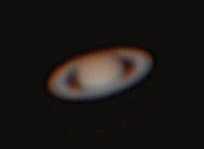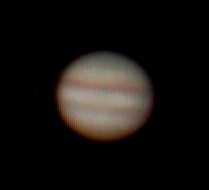SHOWCASE PRODUCTS
Last updated: 31 March 2001
I decided to see if I could capture M42, the Great Orion Nebula, using the SAC IVb CCD attached to the ETX-125EC. At the suggestion of Sonfest I used a focal reducer (the Shutan Wide Field Adapter) to reduce the f/ ratio on the ETX-125EC. No eyepiece was used. Capturing was done using the ReelEyes version 1.1.1 on my Macintosh iBook. As focusing on faint objects is nearly impossible I used the bright star Rigel in Orion to achieve a good focus on the computer screen. I then had the Autostar GOTO M42; I did some minor slewing to get the image on the screen that I was happy with. I set the software to 100% gain (probably too much as it turned out) and the exposure to 1/4 second. I also set the white point adjustment to 100% red to bring out the nebulosity as much as possible. The following is a single frame from the captured movie and is unprocessed. It shows just what the CCD saw. If you look closely you can see a faint red area surrounding the four stars of the Trapezium.
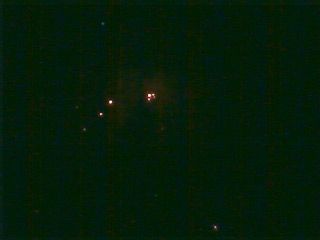
I then used Photoshop 6.0 to combine ten frames from the movie into a single image. The result is shown below.
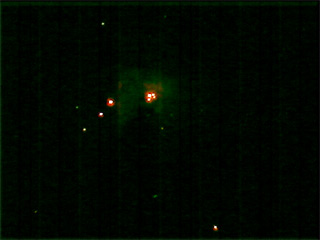
While more nebulosity becomes evident, you can also see the vertical scan lines from the CCD (which is why I think I set the gain too high). Also, I found that the nebula was more visible in the green so that was enhanced in Photoshop.
While this experiment demonstrates that the SAC IVb CCD can be used to image brighter nebula, it also shows that much more work is required to get really good results. I'll keep experimenting. I encourage other SAC CCD and ETX owners to send me their nebula imaging results for posting here.
[12/6/00]
From: jpswann54@netscapeonline.co.uk (jpswann54) After reading about it on your site, I purchased a SACIV b. Am very impressed with it for the money. Am waiting to see how people get on with a Wide Field Adapter before deciding whether to buy one. Your views would be much appreciated. Attached is a composite taken with an ETX 125 showing Saturn, Jupiter and Io, Albireo and Mare Frigoris and Plato. Pictures were taken 6-8 October in Spain. We have not seen any stars here in England for months!! John Swann Chichester, UK
[2/10/01]
From: katetom@sd.znet.com (Kate / Tom) Hooked up ETC-90EC, SAC-IVb, and Macintosh iBook. Once I got the finderscope properly aligned (a prerequisite to maintain your sanity) I easily grabbed images of the Moon, Saturn and Jupiter which I combined in the attached picture. No post processing of the images except to combine them in this one frame. By far the coolest advantage of using this arrangement (scope, SAC-IV, laptop) is the ability to share the telescope with several people simultaneously. Also found that older folks, accustomed to watching something on a screen, were a lot more comfortable than trying to bend over the scope and squint into an eyepiece. On another topic: I'd become hugely frustrated with the alignment process and failure of scope to reasonably find and track objects. A few weeks ago clouds were moving in and I wanted a quick peek at the moon, so I just pointed it generally north, stood back and aligned the tube with the horizon visually, and did a 2 star align. Didn't worry about leveling the tripod, accurately aligning it with true north, etc. Ta-rah. It worked just fine. Seems to be important that the stars used in the alignment are dead center, but then everything else takes care of itself. In fact, several night ago I used this alignment technique, pointed the scope at the moon and pulled up the image on the laptop with he SAC-IV, went in and ate dinner, and came back out to find the moon still on the screen. The opposite limb, but hey....
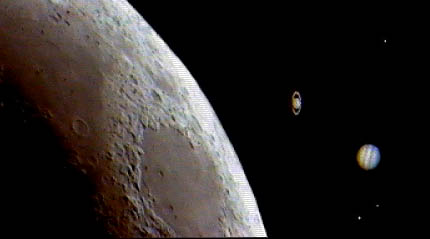
[3/06/01]
Sent: Sunday, March 4, 2001 03:39:07 From: wgrainger@earthlink.net (Garrett) Attached some first try moon shots with IVB I bought. It can produce some pretty nice shots! Of course first time out, it's tough to be a professional, but with some tweeking, it looks like a pretty good value. As I play with it - I'll report improvements and sugestions... By the way - good job with Clay, he's quite a great contributor.... Garrett Grainger
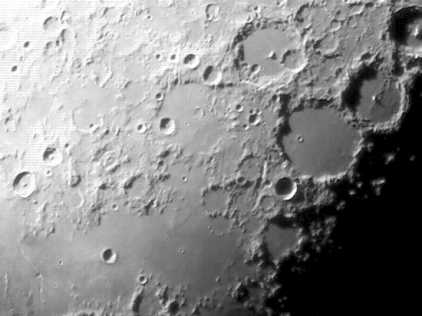
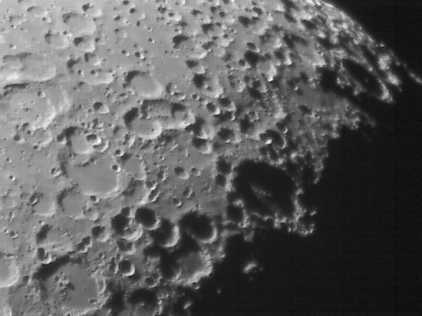
Sent: Sunday, March 4, 2001 11:30:13 From: cbfeldt@post1.tele.dk (Claus B. Petersen) As many have said before me, thanks for a great site. I have enclosed som pictures taken with the ETX125 and the SAC-IV CCD camera. Saturn: picture taken 22.02.01. Exposure1/8 sec. ETX125 + 2X barlow + SAC-IV at primefocus. 77 pictures stacked with Astrostack.Jupiter: picture taken 22.02.01. Exposure1/24 sek. ETX125 + 2x barlow + SAC-IV at primefous.70 pictures stacked with Astrostack 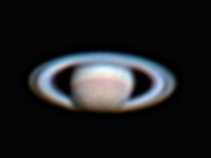
Venus: picture taken 22.02.01. Exposure1/53 sec. ETX125 + 2X barlow + SAC-IV at primefocus. 17 pictures stacked with Astrostack. 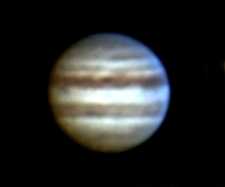
The area around Plato: Picture taken 03.01.01. ETX125 + SAC-IV at primefocus. 5 pictures stacked with Astrostack. 
Sunspot AR9169: picture taken 21.09.00. ETX90EC + SAC-IV at primefocus. 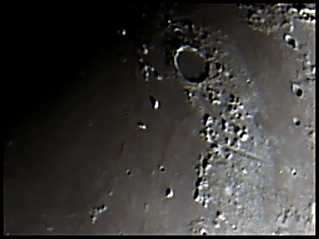
More results can be seen at, home13.inet.tele.dk/etx/ Best regards Claus B. Petersen 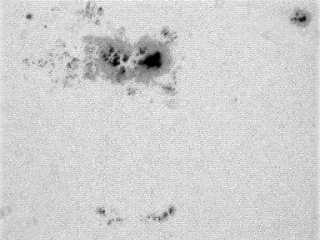
[3/12/01]
Subject: SACIV Sent: Saturday, March 10, 2001 05:53:26 From: Gil.Sturgis@FLHOSP.ORG (Sturgis, Gil) I recently purchased a SAC IVc from Scopetronix. The attached is from my first night out with the new toy. At first I was not planning on sending these in but after I pasted a few of them together, I was rather happy with the result for a "first night". These were taken with a SAC IV at prime focus on an ETX 90ec with an Autostar on 3/2/2001. Several people have noted how critical finder scope alignment is with this camera. I agree and have had good results with a Rigel Quick Finder that I also purchased from Scopetronix based on information on your website. Gil Sturgis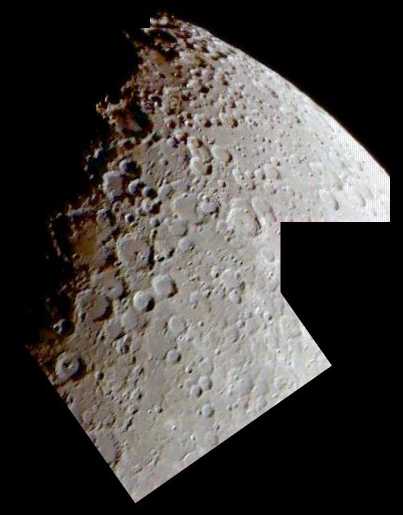
[3/31/01]
Subject: Saturn 23/3/01 Sent: Friday, March 30, 2001 05:49:32 From: ulric@cadence.com From: ulric@cadence.com (Ulric Jessop) To: etx@me.com Here is a photograph of Saturn taken using the ETX90EC with a 2x barlow plus SACIV at prime focus. Exposure was 1/4 sec and eight images were manually stacked using Corel Photo Paint. Use of Jaggy Despeckle and Unsharp Mask. The photo was taken in the street outside my Edinburgh flat just to test my newly acquired camera. Here is a photo of Jupiter taken at the same time as the one of Saturn. Same procedure, except for a shutter-speed of 1/10 sec. Ulric Jessop, Edinburgh, Scotland P.S. Your website is absolutely first-class.
